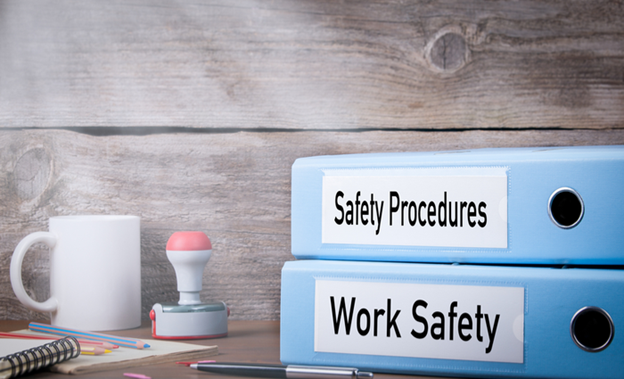Never undervalue workplace safety. A proactive approach to safety has many benefits and many risks and liabilities if you don't. A safety mindset can increase production, reduce costs, lower the risk of accidents, boost morale, and streamline operations. On the other side, however, if you decide to forsake workplace safety in favor of short-term profits, you may end up losing both.
These five elements of a safe work environment are easily achievable by both big and small business.
Employee Training
Safety policies and procedures aren’t enough to ensure a safe workspace. The employer alone can’t guarantee workplace safety. Everyone in the organization should be trained in the importance of safety and their role in maintaining a safe workplace.
Nobody wants to get hurt or see their colleagues get hurt. But people generally have the impression that work-related accidents only happen in other places, to other people. This thinking leads to complacency, and that's precisely when accidents happen. Good training can impart the safety attitude necessary to guard against this complacency.
Safety in Stages
Workplace safety almost always happens in stages. Usually employers originate the idea of protection. It’s what's known as the adoption stage. Once ownership and management have adopted a safety mindset, that mindset will spread throughout the company. but too often employees are acting safely simply because they’re instructed to. what they're instructed to. This stage can’t go on indefinitely.
Next comes the engagement stage, when everyone genuinely buys in. It becomes part of the culture—let’s keep each other safe.
Available Resources
It costs money to implement and uphold safety. That’s the exact reason why some businesses decide to cut corners or renounce on safety altogether. Nevertheless, by doing so, all of these businesses—by not investing in safety—inevitably end up paying more in the long term than what they managed to save in the short term.
Smart organizations provide the resources to be safe.
Effective Response to Reported Hazards
Hazards in the workplace range from seemingly simple hazards (poor housekeeping, working in confined spaces, etc.) up to dangerous chemicals, exposed electrical wiring, and other such extremely dangerous (potentially fatal) issues.
Even if identified, most of these hazards go unfixed over prolonged periods, making them increasingly dangerous. That’s why you need audit/inspection software such as The Checker Software, which instantly emails action items to the people who need to be involved in remedying the hazard.
Leadership by Example
The workplace won’t be safe if the organization’s leaders “talk the talk but don’t walk the walk.” It’s not wearing a hardhat while touring a site. It’s budgeting and effectively incentivizing. It’s truly valuing safety.
When leaders make it clear that safety matters immensely—and they back it up with action and budget funding—the cost-saving, life-saving benefits of investments in safety are fully realized.
Takeaway
Get on the right track of developing a safety-oriented culture where everyone stands to gain. For more information on how to increase the safety of your business, visit our website or contact us directly.











